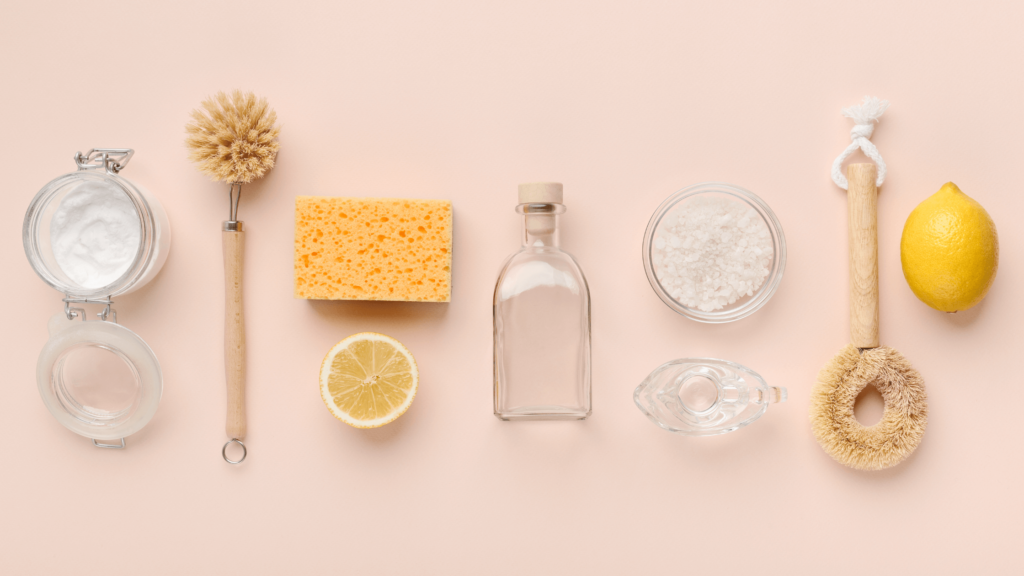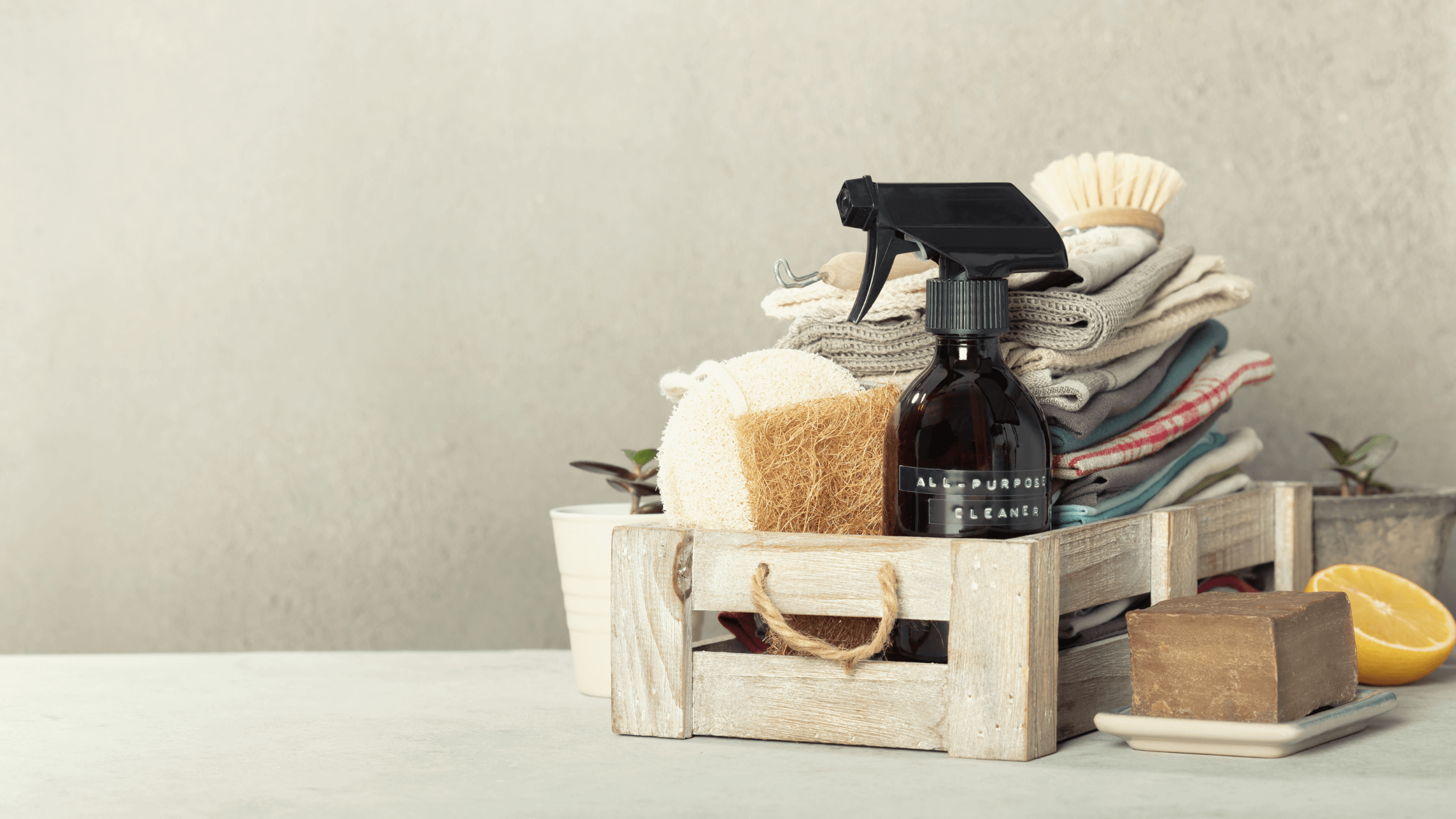AEC workers, especially those in the field, are exposed to hundreds of toxins and irritants every single day. While you can’t control the materials used on the job site, you can address the substances you use in other areas of your life to reduce your toxic load. Instead of using cleaning products with potentially carcinogenic ingredients, you can make your own using baking soda, washing soda, vinegar, and castile soap. These DIY cleaning products are simple to make, inexpensive, and free from hazardous ingredients.
The basics of toxic load
Toxic load refers to the cumulative amounts of hazardous substances in your body. Working in construction means being exposed to hundreds of different substances daily, meaning your toxic load may be higher than the average person’s. Toxins can come from several different sources: inhaling environmental pollutants, absorbing products through the skin, digesting preservatives and artificial ingredients in food, chemical toxins from cleaning products and industrial chemicals, and even toxins you enjoy—like cigarettes, drugs, and alcohol.
Luckily, you’re equipped with a liver, a powerful detoxification system that filters your blood and removes waste and harmful substances. But when exposed to too many pollutants or harmful substances, your liver can become overloaded and unable to remove the toxins, like a clogged filter. Reducing exposure to harmful substances is one of the easiest and most effective ways to lighten your toxic load.
Why you should make the change to DIY cleaning products
You can’t control the substances you encounter on the job site (although wearing personal protective equipment can help limit your exposure), but you can address harmful ingredients in other areas of your life. Your cleaning products are a great place to start.
You can purchase cleaning products made with non-toxic ingredients, but they can be costly. Many brands also take advantage of consumers hoping to choose healthier options and “greenwash” their products, using flimsy words like “natural” that don’t mean anything and camouflaging worrisome ingredients behind “fragrance.”
DIY cleaning products can be incredibly cost-effective and healthier than store-bought alternatives. Many cleaning product recipes use the same handful of ingredients, helping you save money with every batch by buying in bulk. When making your own cleaners, you also know exactly what goes into each one, allowing you to keep them fragrance- and toxin-free and tailor them to your family’s needs.
4 ideas for DIY cleaning products

Making your own cleaning products doesn’t need to be complicated, expensive, or time-consuming. You can make laundry detergent, cleaning spray, glass cleaner, and tub scrub with just a few simple ingredients:
Baking soda
Also known as sodium bicarbonate, baking soda is a fine white powder that can help baked goods rise. It’s also a fine abrasive, which makes it useful for cleaning. Baking soda can scrub most surfaces without damaging them.
Washing soda
This white powder can be confused with baking soda (and to complicate matters more, it can be made by baking baking soda). Also known as sodium carbonate, this substance softens water and makes soaps more effective.
Borax
This alkaline mineral salt, also known as sodium borate, is used as a powerful cleaning agent to make kids slime.
Castile soap
Castile soap is made exclusively from plant oils—including coconut, olive, and sunflower. It’s natural, non-toxic, and biodegradable. Castile soap can be found at most natural food stores, but you can use liquid dish soap if you don’t have any on hand.
Vinegar
This isn’t just great for adding to fish and chips; vinegar is great for cleaning products, too. This clear, acidic liquid is excellent at cutting through grease and grime, removing mineral deposits, and is strong enough to kill some bacteria.
Laundry Detergent
Laundry detergent doesn’t have to come from giant plastic jugs with powerful added fragrances that give you headaches and microplastics that cause long-term damage. You can easily make your own with just three simple ingredients.
In a large bowl, mix:
- 2 bars of the soap of your choice, finely grated
- 1 cup Borax
- 1 cup washing soda
- ½ cup baking soda
Use 1-3 tablespoons per load for clean laundry without harmful detergents.
All-Purpose Spray
This cleaner is excellent for countertops, tables, light switches, and anything else you want to get squeaky clean.
Fill a 32 oz spray bottle ¾ of the way with hot water, then add:
- 3 tablespoons white vinegar
- 2 tablespoons liquid castile soap (or dish soap if you don’t have castile soap)
- 1 tablespoons Borax
Top off the rest of the bottle with hot water and shake gently to combine.
Glass Cleaner
This is perhaps the easiest recipe in the bunch. A 50/50 mix of white vinegar and water in a spray bottle creates a great glass-cleaning spray. Use with a microfibre cloth for a clear, streak-free shine.
Tub Scrub
In a small bowl, mix:
- 1/4 cup baking soda
- 1 tablespoon liquid castile soap or dish soap
Dip a sponge or soft cloth into the mixture and use it to scrub away soap scum buildup and shower grime. For a true “it sounds crazy, but it works” tip, use a broom to clean your bathtub and shower. (Seriously.
Pour a little tub scrub on the bottom of your bathtub or shower, wet your broom head with hot water, and get to work! A broom’s bristles are perfect for getting into corners and around faucets, and they’re just abrasive enough to get everything sparkling clean without hunching over and scrubbing by hand.
(All recipes adapted from the book All You Need Is Less).
Low-cost, non-toxic, squeaky clean
DIY cleaning products are a fantastic way to reduce your toxic load and limit the amount of harmful chemicals you’re exposed to. DIY cleaning products can help you balance the effects of the air pollution you inhale all day on the job site and those after-work beers— while saving money and helping the environment, too! Win-win.
Subscribe to our weekly newsletter to discover other great ways to stay healthy on the job site, including healthy lunchbox recipes and tips for better sleep.


